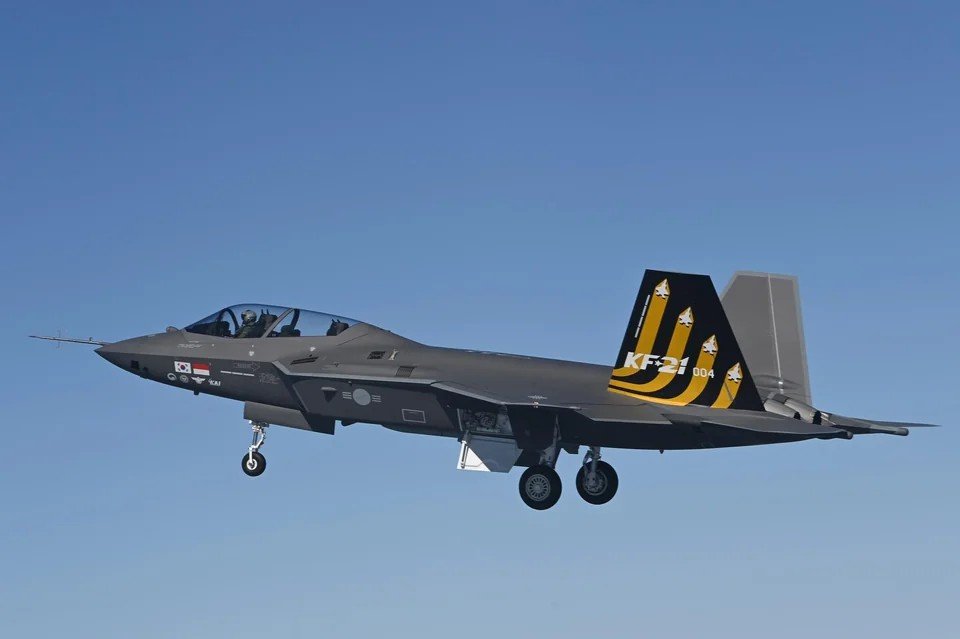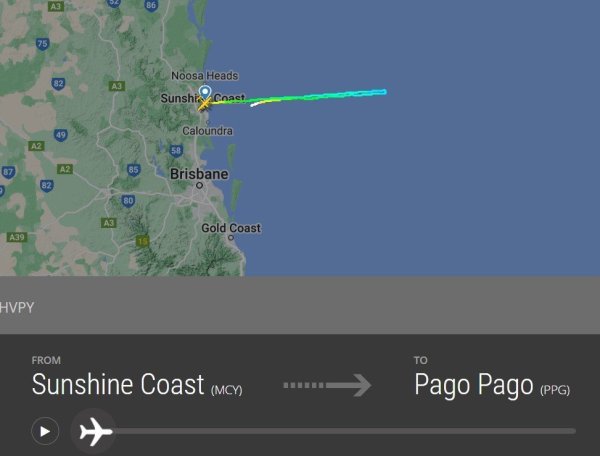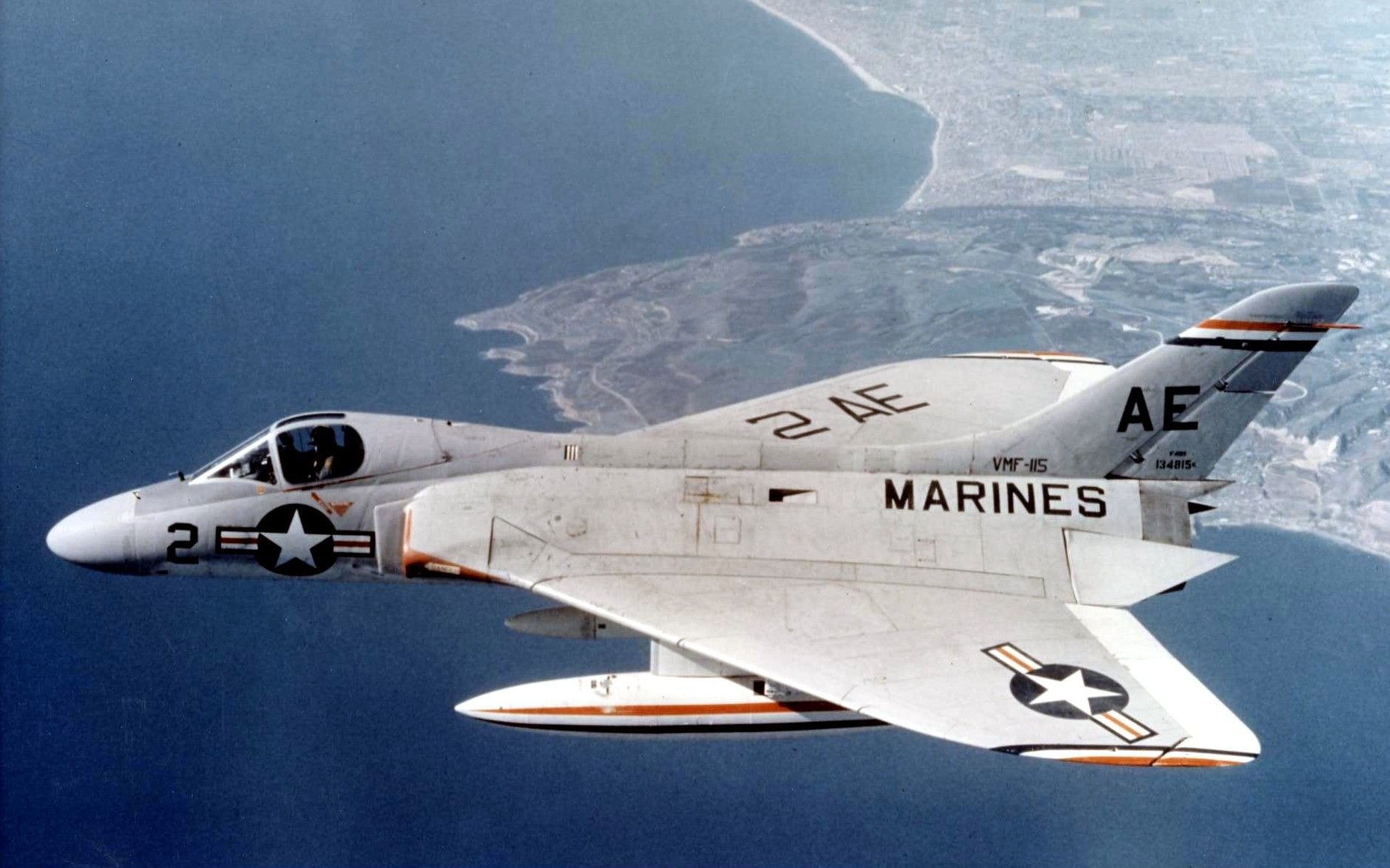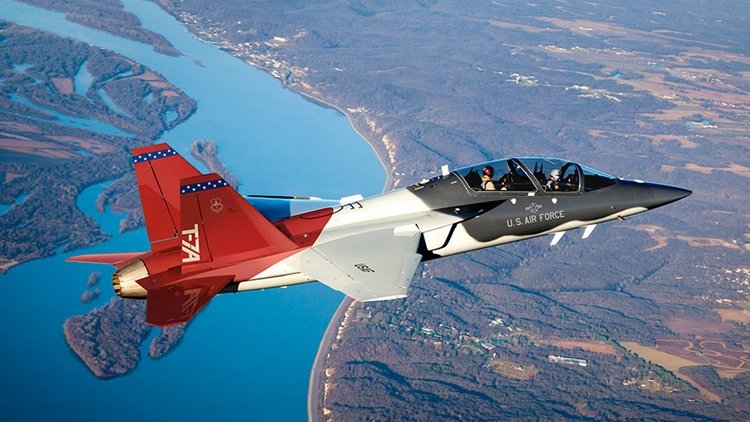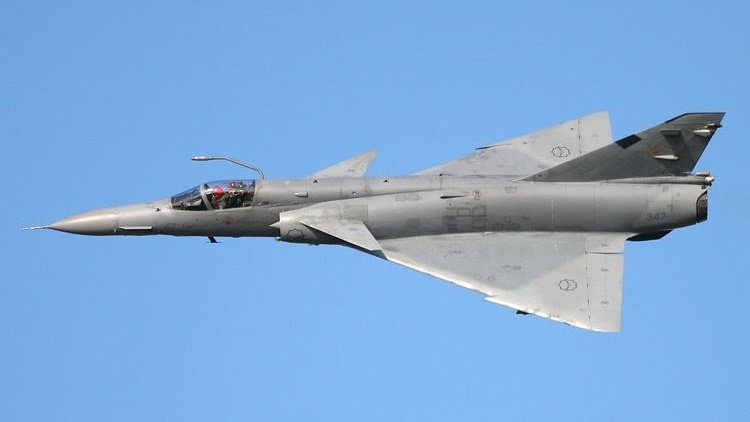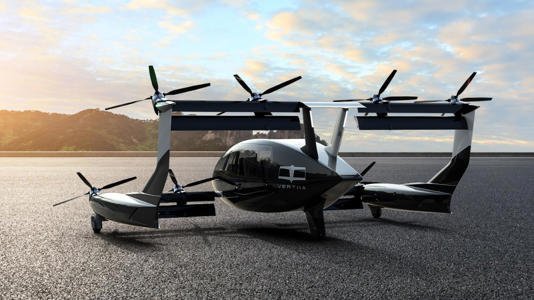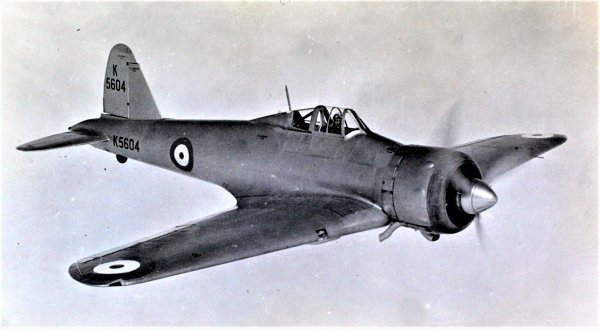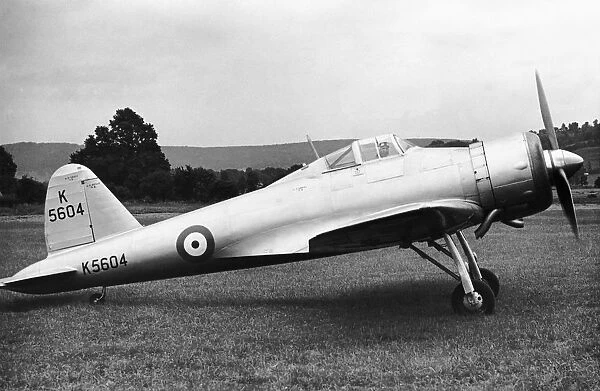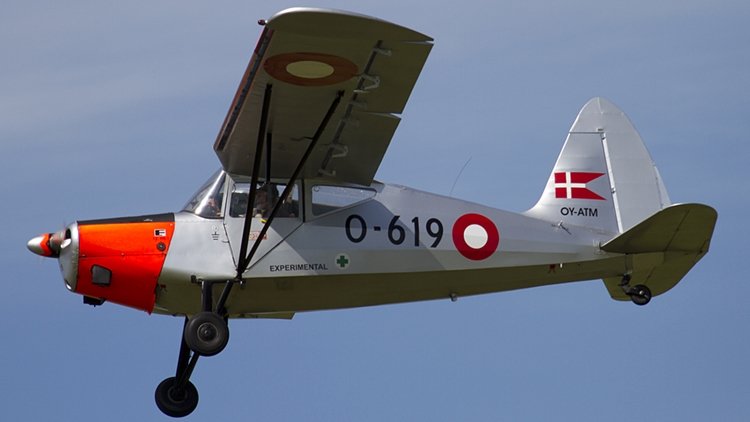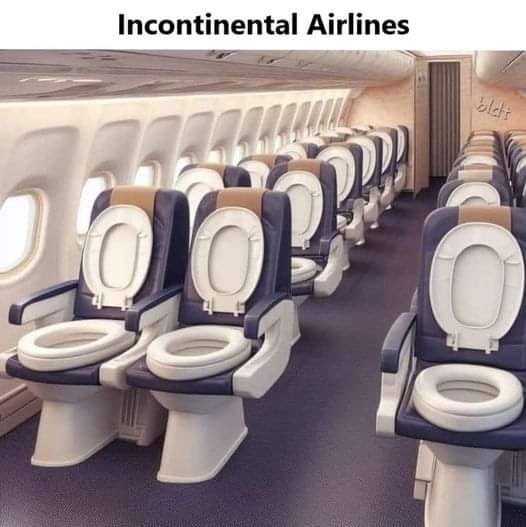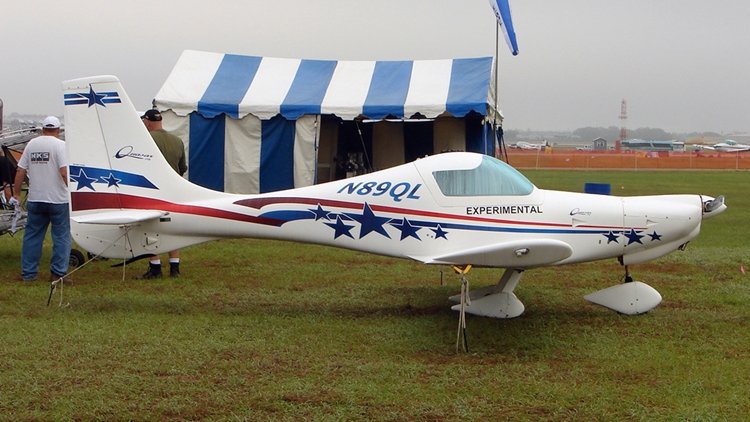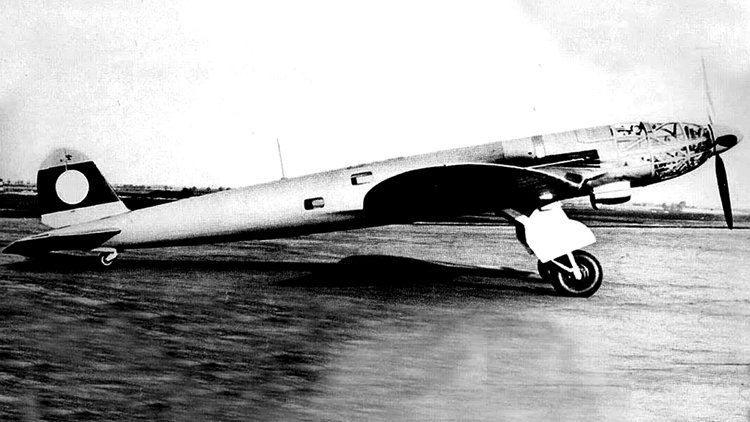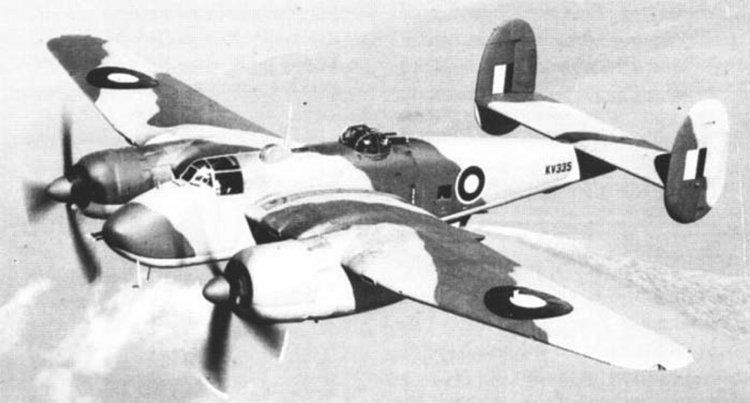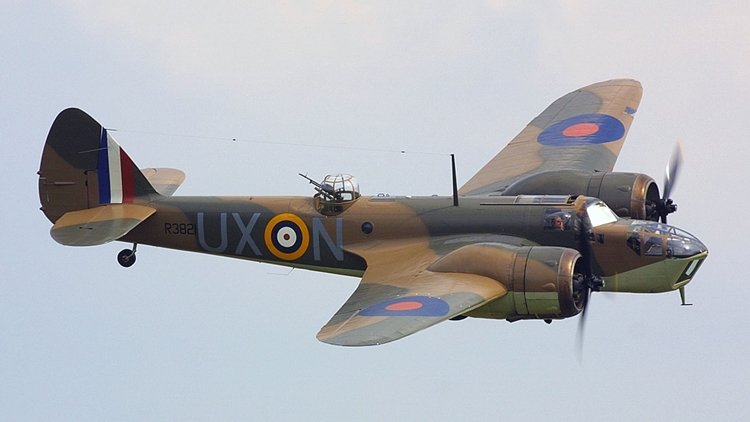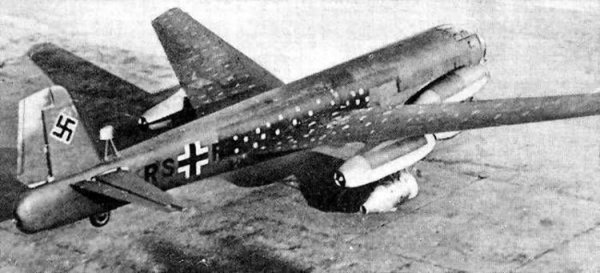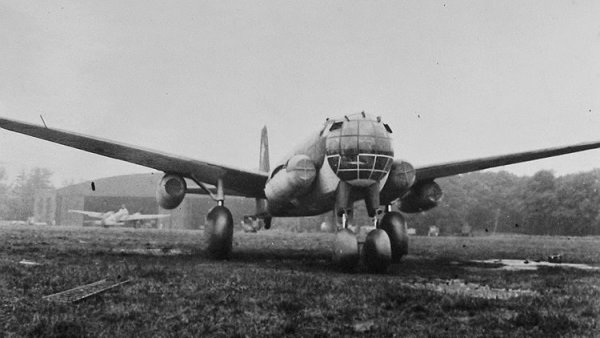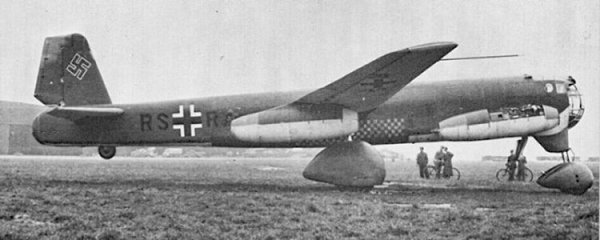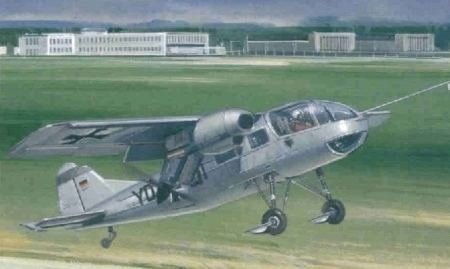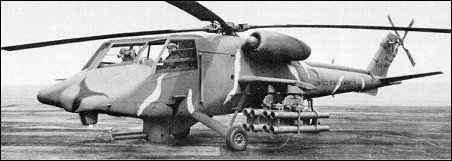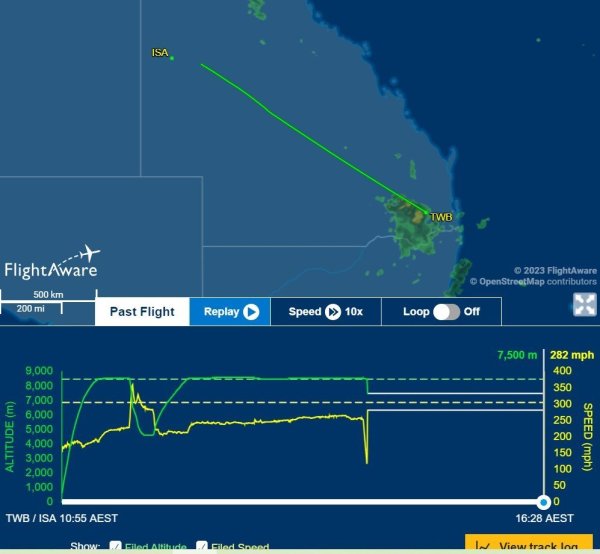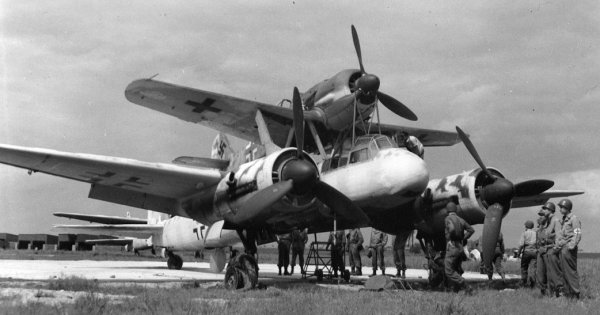-
Posts
7,562 -
Joined
-
Last visited
-
Days Won
67
Content Type
Profiles
Forums
Gallery
Downloads
Blogs
Events
Store
Aircraft
Resources
Tutorials
Articles
Classifieds
Movies
Books
Community Map
Quizzes
Videos Directory
Everything posted by red750
-
The KAI KF-21 Boramae (formerly known as KF-X) is a South Korean-led fighter aircraft development program with the goal of producing an advanced multirole fighter for the South Korean and Indonesian air forces. The airframe is claimed to be stealthier than any fourth-generation fighter, but does not carry weapons in internal bays like fifth-generation fighters, though internal bays may be introduced later in development. The program is led by the South Korean government, which holds 60% of the program's shares. Indonesia took a 20% stake in the program in 2010, and the remaining 20% are held by private partners including the manufacturer Korea Aerospace Industries (KAI). The KAI KF-X is South Korea's second domestic fighter jet development program, following the FA-50. In April 2021, the first prototype was completed and unveiled during a rollout ceremony at the headquarters of KAI at Sacheon Airport. It was officially given the name Boramae (Korean: 보라매, "young hawk" or "fighting hawk"). The first test flight was conducted on 19 July 2022, with manufacturing scheduled to begin in 2026. At least 40 aircraft are planned to be delivered by 2028, with South Korea expecting to deploy a total of 120 of the aircraft by 2032. It will also be available for export market. In Indonesia, the KF-X development program is referred to as the IF-X program. The Jakarta Globe reported that the completed aircraft will receive the designation F-33. Variants KF-21N In September 2022, KAI unveiled a model of the KF-21N, a carrier-based version of the fighter. In May 2022, the Ministry of National Defense (MND) decided to drop funding for the CVX, a planned small aircraft carrier capable of operating STOVL F-35B jets. However, it was later clarified that the MND would consider purchasing a larger aircraft carrier design if a maritime jet fighter could be developed indigenously. Anticipating this, KAI began a preliminary design concept to make the KF-21 carrier-capable. The wings are 20% larger to ensure safety and stabilization when taking off and landing, and they fold for more compact storage. Structural changes would make the airframe capable of CATOBAR and STOBAR operations. If the Republic of Korea Navy (ROKN) decides to procure an aircraft carrier large enough to operate fighters and identifies a requirement, KAI claims it would be able to build the KF-21N "in a few years."
-
The Douglas F5D Skylancer is a development of the F4D Skyray jet fighter for the United States Navy. Starting out as the F4D-2N, an all-weather version of the Skyray, the design was soon modified to take full advantage of the extra thrust of the Pratt & Whitney J57 eventually fitted to the Skyray instead of the Westinghouse J40 originally planned. Soon the design became too different from the Skyray to be considered just a variation of it, and the aircraft was assigned a new designation as the F5D Skylancer. Almost every part of the airframe was modified, though the basic form remained the same as did the wing shape, though it became much thinner. The wing skinning was reinforced, correcting a problem found in the F4D. The fuselage was 8 ft (2.4 m) longer and area ruled to reduce transonic drag, being thinner in the region of the wing roots. Everything was shaped to reduce drag and increase stability at high speed. Although the four 20 mm (.79 in) cannon in the wing roots were retained, primary armament was to be missiles or rockets; four AIM-9 Sidewinders or two AIM-7 Sparrows, and/or a battery of spin-stabilized unguided 2 in (51 mm) rockets. Nine test airframes were ordered, with a 51-aircraft production order to follow, but only four were produced. Production aircraft were to be powered by the more powerful J57-P-14 engine, while there was a rejected proposal to use the even more powerful General Electric J79 and variable-geometry inlets in Mach 2 version.
-
The Douglas F4D Skyray (later redesignated F-6 Skyray) is an American carrier-based fighter/interceptor designed and produced by the Douglas Aircraft Company. It was the last fighter produced by the Douglas Aircraft Company prior to its merger with McDonnell Aircraft to become McDonnell Douglas. Number built: 422. Development of the Skyray was started by Douglas during the late 1940s as the D-571-1 design study. It was a delta wing interceptor capable of a high rate of climb as to permit the rapid interception of approaching hostile bombers. Douglas' proposal was selected by Navy officials to fulfil a formal requirement issued in 1948. The decision to adopt the Westinghouse J40 turbojet engine to power it would lead to considerable difficulties later on as this engine would be cancelled prior to entering production. Aerodynamic issues would also lead to a protracted development cycle, considerable design changes being made even after the maiden flight of a production standard Skyray having taken place in June 1954. The Skyray was declared ready for fleet introduction in April 1956, permitting its entry to service with both the United States Navy (USN) and United States Marine Corps (USMC) shortly thereafter. The Skyray had a relatively brief service life, during which it never participated in actual combat. Despite this, it was the first carrier-launched aircraft to hold the world's absolute speed record, having attained a top speed of 752.943 mph, (1,211.744 km/h). It also set a new time-to-altitude record, flying from a standing start to 49,221 feet (15,003 m) in two minutes and 36 seconds, all while flying at a 70° pitch angle. The last Skyrays were withdrawn from service in February 1964, although a handful continued to be flown for experimental purposes by National Advisory Committee for Aeronautics (NACA) up to the end of the decade. The F5D Skylancer was an advanced development of the F4D Skyray that ultimately did not enter service. The Skyray originated within a design study, the D-571-1, performed by Douglas and funded by the United States Navy (USN). It was a fast-climbing pure interceptor that used a delta wing configuration and powered by a pair of Westinghouse J34 turbojet engines, which were equipped with afterburners for bursts of additional acceleration. The D-571-1 had a relatively thick wing with no conventional fuselage save for a pod-like cockpit in a forward position. A total of four 20mm cannons extended forward of the leading edge of the wing, alternative armaments consisted of spin-stabilized rockets. The design study had harnessed the designs and research of the German aerodynamicist Alexander Lippisch, who moved to the United States following the end of World War II; his work had been examined by several of Douglas' design team. In June 1947, the Navy issued a contract to Douglas to proceed with preliminary investigation and engineering works on the concept up to the mockup stage. For more details on the development and operational history of the Skyray, click here. Variants XF4D-1 Prototypes; redesignated YF-6A in 1962, two built. F4D-1 (Specifications below) Single-seat fighter aircraft, production model; redesignated F-6A in 1962, 420 built. F4D-2 Re-engined F4D-1 with the J57-F-14, 100 on order cancelled. F4D-2N F4D-2 version with extended nose housing twin radar scanners, project only evolved into the F5D Skylancer.
-
The Boeing–Saab T-7 Red Hawk, initially known as the Boeing T-X (later Boeing–Saab T-X), is an American/Swedish supersonic advanced jet trainer produced by Boeing with Saab. On 27 September 2018, the United States Air Force (USAF) picked it for the T-X program to replace the Northrop T-38 Talon as the service's advanced jet trainer. The first production T-7 was rolled out on 28 April 2022. Boeing intends to offer an armed version of the T-7 to replace aging Northrop F-5 and Dassault/Dornier Alpha Jet fleets around the world. On 18 May 2023, the Government Accountability Office released a report on the T-7 program detailing problems with the software and safety systems and other delays that saw the USAF delay a production decision to February 2025. The report said that a schedule provided by Boeing in January 2023 was optimistic and dependent on favorable assumptions. Notwithstanding the delayed production decision, the report noted that Boeing still planned to start producing the first T-7s in early 2024. On 28 June 2023, the first flight of the T-7A production aircraft was conducted from St. Louis Lambert International Airport, by Major Bryce Turner, a test pilot with the 416th Flight Test Squadron at Edwards Air Force Base, California, and Steve Schmidt, Boeing’s chief T-7 test pilot. On 21 September 2023, the first Red Hawk was shipped to the US Air Force. The T-7's design allows for future missions to be added, such as the aggressor and light attack/fighter roles. In the training environment, it has been specifically designed for high-G and high angle-of-attack maneuvers and night operations, with an emphasis on being easily maintained. The aircraft is equipped with a single GE F404 turbofan engine, but produces three times the total thrust as the twinjet T-38. Variants BTX-1 Two prototypes were constructed for evaluation: N381TX, the first prototype built and first T-7 to fly N382TX, the second prototype used in testing T-7A Red Hawk (Specifications below) Production aircraft for the USAF as the winner of the T-X program to replace the Northrop T-38 Talon. Designated eT-7A prior to delivery, identifying it as a digitally engineered aircraft. T-7B a variant proposed for the United States Navy's Tactical Surrogate Aircraft program, with a possible sale of 64 aircraft. F/T-7X a variant proposed for the USAF's Advanced Tactical Trainer program, with a possible 100 to 400 aircraft sale.
-
The Atlas Cheetah is a South African fighter aircraft designed and produced by the aviation company Atlas Aircraft Corporation (later Denel Aeronautics). It was developed at the behest of, and principally operated by, the South African Air Force (SAAF). The Cheetah was developed amid the Border War of the 1980s as a major upgrade of the French-built Dassault Mirage III fleet operated by the SAAF. The programme integrated technology from the Israeli-built IAI Kfir, which had been derived from the Mirage 5/IAI Nesher. The upgrade programme, which was known as Project Cushion, produced three variants; the two-seat Cheetah D, the single-seat Cheetah E, and the single-seat Cheetah C. All three models were inducted into the SAAF, functioning for a time as the service's most capable fighter and strike aircraft. A single Cheetah R, intended for aerial reconnaissance, was built as a prototype, but this variant never entered service. During 1992, the Cheetah E model was withdrawn from SAAF service; both the Cheetah Cs and Cheetah Ds were retired during April 2008, having been being replaced by the Swedish-built Saab Gripen. Since its retirement by the SAAF, a limited number have still operated in South Africa as flight test aircraft. Some have been exported, such as to the Ecuadorian Air Force (EAF) as a source of spare parts. The privately owned company Draken International intends to use the Cheetah as an adversarial aircraft for combat training services in the United States. Variants Cheetah C (Specifications below) The Cheetah C was the final development in the Cheetah series and was the only fighter aircraft in service with the SAAF until replaced by the Swedish-built Saab JAS 39 Gripen during 2008. In addition to the upgrades described above, the Cheetah C incorporated more sophisticated avionics and navigation suite and an improved pulse-doppler multi-mode radar (ELTA). The aircraft was also fitted with a data link and updated versions of the helmet-mounted sight, HUD and improved HOTAS controls. Other improvements included the fitting of a single-piece wrap-around windshield in place of the previous three-piece version, a revised in-flight refuelling probe with less external piping, new undercarriage and suspension, the deletion of the wing fences, an Atar 9K50 engine and a new nose to incorporate the more sophisticated electronics and radar. Like the Cheetah D, the Cheetah C was capable of delivering precision-guided munitions (PGMs), ranging from laser-guided bombs (LGBs), to GPS-guided weapons and TV-guided bombs. It also had the capability of using stand-off air-to-ground weapons such as the MUPSOW and TORGOS. In addition, it was able to carry a wide range of air-to-air weapons including the V4 R-Darter radar-guided missile and the A-Darter infrared (IR)-guided missile. Cheetah D The Cheetah D was the sole two-seater variant, and was predominantly used as a trainer for pilots converting to the Cheetah C. It also had a secondary attack capability, including the ability to deliver PGMs. Under Project Recipient, 10 Cheetah Ds were re-engined with the Atar 09K50C-11, replacing their original Atar 09C engines. After the engine modification, the remaining aircraft received an avionics upgrade to bring them to the same standard as the Cheetah C. The original three piece front windshield was also replaced with a one-piece wraparound version. Cheetah D No.845 was based at the Test Flight and Development Centre (TFDC) as a systems testing aircraft and used in the development of the Denel Dynamics MUPSOW stand-off weapon. Denel used two Cheetah Ds for testing (844 and 847). The former was Denel's standard systems testing aircraft, while the latter was used in the evaluation of the SMR-95 engine, a development of the Soviet-built Klimov RD-33. The performance increase offered by the Russian engine was impressive, but a combination of budget cuts and problems with the aircraft's centre of gravity contributed to the program's termination. Cheetah E The single-seater Cheetah E was developed as an interim fighter for use in the period before the Cheetah Cs became operational. It was fitted with a comparatively simple avionics suite and radar and retained the Atar 9C-3 engine. Its typical mission was as a standby interceptor, whereby a minimum of two aircraft armed with two V3B (later V3C) missiles, would be on permanent alert status in case of an attack from the north. All aircraft were placed into storage with the final example (No.842) painted in a non-standard camouflage scheme and used for systems testing. No.842 is currently with the SAAF Museum, and is stored at AFB Swartkop. In 2003, Chile purchased five of the mothballed aircraft (Numbers 819, 820, 827, 832 and 833) and indicated its desire to purchase seven more aircraft (numbers 822, 823, 825, 828, 829, 831 and 834) subject to the agreement of a suitable purchase price. The Chilean Air Force (FACh) used the Cheetah E airframes as a source of spares for its similar ENAER Pantera aircraft until these planes were retired in late 2006. Cheetah R The Cheetah R was a feasibility study into an extension of the Cheetah upgrade programme to include a specialist reconnaissance model. An Atar 9K50-engined Mirage IIIR2Z, (855), was chosen as the airframe for the upgrade. In addition to the airframe refurbishment, 855 received a new nose design and the same radar as used in the Cheetah E, the twin DEFA 30mm cannons were removed and it was the only Cheetah type to not receive an in-flight refuelling probe. The SAAF decided not to proceed with the Cheetah R programme and 855 was assigned to the Atlas Advanced Combat Wing (ACW) where it was used as a testing and development aircraft. It was decided that rather than developing a dedicated reconnaissance airframe, that the Vinten Vicon 18 Series 610 reconnaissance pod would be used on the Cheetah C variant to provide reconnaissance capabilities
-
A'flying car' designed to respond to emergencies in remote and regional Australia is one year closer to lift-off after receiving a $5.43 million funding boost from the federal government. The Australian Renewable Energy Agency announced its investment in Sydney-based start-up ASML Aero on Wednesday, in what it called a bid to demonstrate the the feasibility of hydrogen-powered planes. Read more here.
-
The Gloster F.5/34 was a British fighter of the 1930s. It was a single-seat, single-engine monoplane of all-metal cantilever construction; the undercarriage was of the tailwheel type with retractable main wheels. The aircraft was developed for Air Ministry Specification F.5/34, a fighter armed with eight machine guns and an air-cooled engine that was well-suited to operations in the tropics. The Gloster design was overtaken by more capable competitors and the specification was later abandoned, with none of the aircraft designs produced for it selected for entry into service. Only 2 produced.
-
The SAI KZ VII Lærke (Danish: "Lark") was a light utility aircraft built in Denmark shortly after the Second World War. Based on the SAI KZ III air ambulance, the KZ VII was a strut-braced, high-wing monoplane of conventional design with an enclosed cabin for four seats. Fifty-six aircraft were built, and another 22 partially completed aircraft were destroyed in a factory fire in 1947. The Danish Air Force operated 10 of the type as trainers between 1950 and 1977.
-

e-mail notifications. Not getting any.
red750 replied to flying dog's topic in AUS/NZ General Discussion
I don't need email notifications. I'm always logged in, viisit a number of times a day, and get many notifications on the bell icon under my avatar. Most at one time was 21. My email box would overflow in a day ir two. -
The Aeroalcool Quasar is a Brazilian light-sport aircraft that is produced by Aeroálcool and was introduced in 2007. The aircraft was designed by American Frank Porter with assistance from James Waterhouse of the Federal University of São Carlos in Brazil, to comply with the US light-sport aircraft rules. It features a cantilever low-wing, a two seats in side-by-side configuration enclosed cockpit under a forward hinged canopy, tricycle landing gear and a single engine in tractor configuration. The aircraft is made from aluminum sheet and has a 9.25 m (30.3 ft) span wing. The initial engine used was the Japanese 60 hp (45 kW) HKS 700E four-stroke powerplant which gives it a cruise speed of 210 km/h (130 mph) while burning only 9 litres (2.0 imp gal; 2.4 US gal) per hour of auto fuel. A total of 60 had been built by 2015. Variants Quasar Lite (Specifications below) Initial model, powered by the 85 hp (63 kW) Jabiru 2200 four-stroke powerplant. Quasar 214SL Import version for the US market, distributed by Quasar Aircraft Company, Inc. Accepted as a US light sport aircraft in 2007. Quasar Fast Model powered by the 120 hp (89 kW) Jabiru 3300 four-stroke powerplant.
-
I used to travel this road fairly regularly when I was learning to fly, and used it to train my eye. The descending road equated to an approach path and the level ground the runway. I kept my eye on the level ground and watched the changing angle as I got nearer. The far end dropped away as I approached the start of the level road.
-
The Heinkel He 119 was an experimental single-propeller monoplane with two coupled engines, developed in Germany. A private venture by Heinkel to test radical ideas by the Günter brothers, the He 119 was originally intended to act as an unarmed reconnaissance bomber capable of eluding all fighters due to its high performance. Design was begun in the late summer of 1936. A notable feature of the aircraft was the streamlined fuselage, most likely as an evolutionary descendant of the 1932-vintage Heinkel He 70 record-setting single-engined mailplane design, but without the He 70's protruding canopy-enclosed crew accommodation existing anywhere along the exterior. Instead, the He 119's forward fuselage featured an extensively glazed cockpit forming the nose itself, heavily framed with many diagonally braced windows immediately behind the propeller spinner's rear edge. Two of the three-man crew sat one each side of the driveshaft, which ran aft to a "power system", a coupled pair of Daimler-Benz DB 601 engines mounted above the wing center-section within the fuselage, mounted together within a common mount (the starboard component engine having a "mirror-image" centrifugal supercharger) with a common gear reduction unit fitted to the front ends of each component engine, forming a drive unit known as the DB 606, the first German aircraft to use the "high-power" powerplant system. meant to provide German aircraft with an aviation powerplant design of over-1,500 kW (2,000 PS) output capability, but weighing 1.5 tonnes apiece. The DB 606 was installed just behind the aft cockpit wall, near the center of gravity, with an enclosed extension shaft passing through the centerline of the extensively glazed cockpit to drive a large four-blade variable-pitch airscrew in the nose. An evaporative cooling system was used on the V1, with the remaining prototypes receiving a semi-retractable radiator directly below the engine to augment cooling during take-off and climb. Only eight prototypes were completed and the aircraft did not see production, mainly because of the shortages of DB 601 "component" engines to construct the 1,500 kg (3,300 lb) DB 606 "power systems" they formed. The first two prototypes were built as land planes, with retractable landing gear. The third prototype (V3) was constructed as a seaplane with twin floats. This was tested at the Erprobungsstelle Travemünde military seaplane test facility on the Baltic coast, and was scrapped in 1942 at Heinkel's factory airfield in the estuarine Rostock-Schmarl community, then known as Marienehe. On 22 November 1937, the fourth prototype (V4) made a world class-record flight in which it recorded an airspeed of 505 km/h (314 mph), with a payload of 1,000 kg (2,205 lb), over a distance of 1,000 km (621 mi). The four remaining prototypes were completed during the spring and early summer of 1938, the V5 and V6 being A-series production prototypes for the reconnaissance model, and the V7 and V8 being B-series production prototypes for the bomber model. These four aircraft were three-seaters with a defensive armament of one 7.92 mm (0.312 in) MG 15 machine gun in a dorsal position, V7 and V8 having provision for a normal bombload of three 250 kg (551 lb) bombs or maximum bombload of 1,000 kg (2,205 lb). V7 and V8 were sold to Japan in May 1940, and extensively studied; the insights thus gained were used in the design of the Yokosuka R2Y.[citation needed] The remaining prototypes served as engine test-beds, flying with various prototype versions of the DB 606 and DB 610 (twinned DB 605s) and the strictly-experimental DB 613 (twinned DB 603). Variants He 111U Propaganda designation of the He 119 He 119 Specifications below) Basic version, eight prototypes built. He 519 1944 high-speed bomber development, designed as a private venture by Heinkel to test radical ideas by the Günter brothers, the He 519 was designed to use the 24-cylinder Daimler-Benz DB 613, but the aircraft remained a concept and was abandoned at the end of the war.
-
The Bristol Type 163 Buckingham was a British Second World War medium bomber for the Royal Air Force (RAF). Overtaken by events, it was built in small numbers and was used primarily for transport and liaison duties. In early 1939 Bristol suggested a bomber variant of the Beaufighter with their Hercules engines. British policy at the time was for medium bombers to be obtained from the US allowing British industry to concentrate on heavy bomber designs; nonetheless a design was requested preferably based on an existing aircraft. This meant working with the Beaufighter or Beaufort. Bristol worked on their design first as the Bristol Type 161 then the Type 162 Beaumont. Air Ministry specification B.7/40 called for a medium bomber to replace the Blenheim. The specification stipulated a speed of at least 300 mph at 5,000 ft, a normal load of 1,000 lb of bombs and a centre turret armed with at least two 0.5 inch (12.7 mm) machine guns. Only one manufacturer (Armstrong Whitworth) tendered a full design but it did not meet with approval. So when Bristol brought their Type 162 ("tentatively named Beaumont"), which was well matched to B.7/40, to the Air Staff, the company received a request to complete a mockup in 1940 and then a confirmed contract for three prototypes in February 1941. The Beaumont was based on the rear fuselage and tail of a Beaufighter, with a new centre and front fuselage. The armament was a mid-upper turret with four machine guns, with four more machine guns firing forward and two firing to the rear. Construction began in late 1940, with a new Air Ministry Specification B.2/41 to be written around it. Changes in the requirements, removing dive bombing and "direct army support" which incoming US bombers were expected to be capable of and increasing the performance to allow for the future, meant the Beaumont would no longer suffice. The changes in performance (requiring a bomb load of 4,000 lb, a speed of 360 mph and a range of 1,600 miles) meant a redesign by Bristol to use the Bristol Centaurus engine. The Bristol redesign with a larger wing and the more powerful engines was the Type 163 Buckingham. It had gun installations in the nose, dorsal and ventral turrets. Generally conventional in appearance, one unusual feature was that the bomb-aimer/navigator was housed in a mid-fuselage ventral gondola, resembling those on the earlier German Heinkel He 111H and American Boeing B-17C and -D in appearance. This was part of an attempt to give all the crew positions unobstructed views and access to each other's positions. The bomb bay could hold a 4,000 lb, two 2,000 lb, four 1,000 lb or six 500-lb bombs. The rear of the gondola had a hydraulically powered turret with two 0.303 Browning machine guns. The Bristol-designed dorsal turret carried four Brownings. A further four fixed, forward-firing Brownings were controlled by the pilot. Following more changes, specification B.2/41 was replaced by B.P/41. An order for 400, at an initial rate of 25 per month, was made with deliveries expected in March 1943 but Bristol were still concerned that this not a reasonable scale and would prove expensive, and as such complained to MAP about poor planning. The first flight took place on 4 February 1943. During testing, the Buckingham exhibited poor stability which led to the enlargement of the twin fins, along with other modifications. Variants Type 163 Buckingham Prototypes with two Centaurus IV engines, four built. Type 163 Buckingham B1 Production variant first flown 12 February 1944 with Centarus VI or XI engines, 400 ordered but reduced first to 300 then to 119, with only 54 built as bombers. Type 163 Buckingham C1 (Specifications below) Residual production completed as fast courier transport with four-passenger seats and removal of armour and armament and increased fuel tankage, 64 built. Type 164 Brigand Torpedo bomber variant using Buckingham wings and tails and new fuselage. Type 165 Brigand II Trainer variant of the Brigand, not built. Type 166 Buckmaster Trainer variant of the Buckingham. Type 169 Proposed photo-reconnaissance variant of the Buckingham, not built.
-
The Bristol Fairchild Bolingbroke is a maritime patrol aircraft and trainer used by the Royal Canadian Air Force during the Second World War. Produced by Fairchild-Canada, it was a license-built version of the Bristol Blenheim Mk IV bomber. In 1935, the British Air Ministry issued Specification G.24/35 to procure a coastal reconnaissance/light bomber to replace the Avro Anson. Bristol proposed the Type 149, based on its Blenheim Mk I, with Bristol Aquila engines to give greater range. While the Air Ministry rejected this proposal, a Blenheim Mk I, retaining its Mercury VIII engines, was converted as a Type 149 (Blenheim Mk III) for the general reconnaissance role. The nose was lengthened to provide more room for the bombardier, with the upper left surface of the nose being scooped out to maintain pilot visibility during takeoff and landing. The longer range also fulfilled a Canadian requirement for a maritime patrol aircraft. Consequently, Fairchild Aircraft Ltd. (Canada) of Quebec started production of the Blenheim Mk IV as the Bolingbroke (the originally intended name for the Blenheim IV). This type was nicknamed the "Bolly". After a small run of aircraft constructed to British specifications, as the Bolingbroke Mk I, Fairchild switched production to the Bolingbroke Mk IV with Canadian and American instruments and equipment. These versions also included anti-icing boots and a dinghy. One of the early Mk IV variants was the Bolingbroke Mk IVW which was powered by two 825 hp (615 kW) Pratt & Whitney SB4G Twin Wasp Junior engines. Incapable of maintaining altitude on one engine, the normal bomb load was reduced to 500 pounds on these aircraft to compensate for the low engine power. The most-produced variant was the Bolingbroke Mk IVT trainer, of which 457 were completed. A total of 626 Bolingbrokes were produced. Variants Bolingbroke Mk I Twin-engine maritime patrol bomber aircraft, powered by two Bristol Mercury VIII radial piston engines, with British equipment. 18 built. Bolingbroke Mk II Conversion of fifth Mk I with US equipment - prototype of Mk IV. Bolingbroke Mk III Floatplane conversion of sixteenth Bolingbroke Mk I, with two Edo floats. Bolingbroke Mk IV (Specifications below) Twin-engine maritime patrol bomber aircraft, equipped with anti-icing boots and a dinghy, also fitted with American and Canadian instruments and equipment, powered by two Bristol Mercury XV radial piston engines, 134 built. Bolingbroke Mk IVW Sub-version of Mk IV powered by two 825 hp (615 kW) Pratt & Whitney SB4G Twin Wasp Junior radial piston engines as contingency against possible shortages of Mercury engines. The Mk IVW's performance was below that of the Mk IV and the supply of the British engines was maintained so production returned to the Mk IV after only 15 aircraft were built. Bolingbroke Mk IVC Version of Mk IV with 900 hp (671 kW) Wright R-1820 Cyclone engines not requiring high octane fuel. One built. Bolingbroke Mk IVT Multi-purpose trainer aircraft. A total of 350 built powered by Mercury XV engines, followed by a further 107 powered by the low-octane fuel Mercury XX* engine, giving a total of 457 built, with a further 51 cancelled. Six Mk IVT were converted to dual controls. A further 89 were converted to Mk IVTT Target Tug with the addition of winching gear in the rear cabin and target drogue storage in the bomb bay.
-
-
The Junkers Ju 287 was a multi-engine tactical jet bomber built in Nazi Germany in 1944. It featured a novel forward-swept wing, and the first two prototypes (which were aerodynamic testbeds for the production Ju 287) were among the very few jet propelled aircraft ever built with fixed landing gear. The Junkers factory in Dessau was overrun by the Red Army in late April 1945. Before long, the Junkers Ju 287 V2 had been almost completed, waiting for its engines to be fitted, and construction of the V3 had reached 80-90 percent completion, while the V4 was reportedly 60 percent complete. Both V1 and V2 were destroyed by the personnel at the Luftwaffe test base in Brandis to avoid capture by Allied forces. Wocke and his staff were captured by the Red Army and taken to the Soviet Union, and remnants of V2, especially the wings, were used in construction of the EF 131 which was flown on 23 May 1947, but by that time, jet development had already overtaken the Ju 287. A final much-enlarged derivative, the EF 140, was tested in prototype form in 1949 but soon abandoned.
-
As the copied text says, information is sparse.
-
The Dornier Do 29 was an experimental aircraft developed by Dornier Flugzeugwerke and the Deutsche Versuchsanstalt für Luftfahrt (German Aviation Laboratory) in the 1950s, used to test a tilting-propeller system for short takeoff and landing (STOL) aircraft. The concept was proved successful in flight testing; however, no further development of the system or aircraft was proceeded with, and at the conclusion of its test program the Do 29 was retired. Two examples of the Do 29 were constructed, while a third was planned but not built, with the first prototype flying on 12 December 1958. In the following flight testing, the propeller system was not rotated further than 60 degrees as opposed to its nominal 90 degree capability, but the aircraft proved to be highly successful, with a stalling speed of 24 kilometres per hour (15 mph) and exceptional short-field performance. Despite this, however, the tilting-propeller system was not further pursued after the end of the flight test program.
-
The Advanced Attack Helicopter project was a US Army project from 1972. The Boeing-Vertol 235 was one of the proposed designs for the project. The picture is of the 235 mock-up; the farthest this design ever got. At the end of the the AAH project, the Army chose the Hughes YAH-64, now known as the AH-64 Apache. Hell, I’d choose the Apache over this thing as well. The Boeing-Vertol 235 is noticeably asymmetrical. It looks like a helicopter version of Two Face. Or it had a stroke. Information is sparse.
-

4.11.23 Cloncurry light plane crash
red750 replied to trailer's topic in Aircraft Incidents and Accidents
-
Mistel (German for "mistletoe", a parasitic plant) was the larger, unmanned component of a composite aircraft configuration developed in Germany during the later stages of World War II. The composite comprised a small piloted control aircraft mounted above a large explosives-carrying drone, the Mistel, and as a whole was referred to as the Huckepack ("Piggyback"), also known as the Beethoven-Gerät ("Beethoven Device") or Vati und Sohn ("Daddy and Son"). The most successful of these used a modified Junkers Ju 88 bomber as the Mistel, with the entire nose-located crew compartment replaced by a specially designed nose filled with a large load of explosives, formed into a shaped charge. The upper component was a fighter aircraft, joined to the Mistel by struts. The combination would be flown to its target by a pilot in the fighter; then the unmanned bomber was released to hit its target and explode, leaving the fighter free to return to base. The first such composite aircraft flew in July 1943 and was promising enough to begin a programme by Luftwaffe test unit KG 200, code-named "Beethoven", eventually entering operational service.


